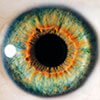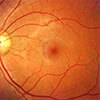Superficial Keratectomy
When cornea scarring or opacity involves the anterior layers at the front of the cornea, a superficial keratectomy procedure can help to remove and smooth the corneal surface.
Diseases that are commonly treated by a superficial keratectomy include the following:
- Anterior basement membrane dystrophy (map-dot-fingerprint dystrophy), a hereditary genetic abnormality of the epithelium and basement membrane that leads to scar tissue deposition.
- Salzmann’s nodular degeneration, a callous-like scar tissue that forms under the epithelium of the cornea, commonly occurring in areas of corneal inflammation or prior infection.
- Calcific band keratopathy, a deposition of calcium in the anterior cornea due to corneal disease, intraocular disease or a hereditary predisposition.
- Other anterior opacities not involving deeper layers of the cornea.
Anterior disease of the cornea can cause dryness, irritation, pain, recurrent erosions, or irregular astigmatism. These symptoms can affect activities of daily living and quality of life. Initial treatment, like lubrication and other medications, is focused on minimizing symptoms. If conservative measures do not work, surgical options can be considered.
Superficial Keratectomy Procedure
The superficial keratectomy procedure can be performed in the office or in an outpatient surgery center. After the eye surface is numb, the surgeon scrapes away the epithelial cells, which are the front layer of surface cells, exposing the underlying scar tissue or corneal deposit.
Most procedures involve a combination of manual and mechanical techniques. The manual smoothing is performed with a blunt, hand-held instrument, allowing precise control over the tissue being removed. The mechanical technique involves a burr instrument that finely and evenly smoothes the corneal surface. A bandage contact lens is placed on the eye to protect the healing cells and minimize postoperative discomfort. Eye drops are applied regularly and healing time is generally 6-8 weeks.









